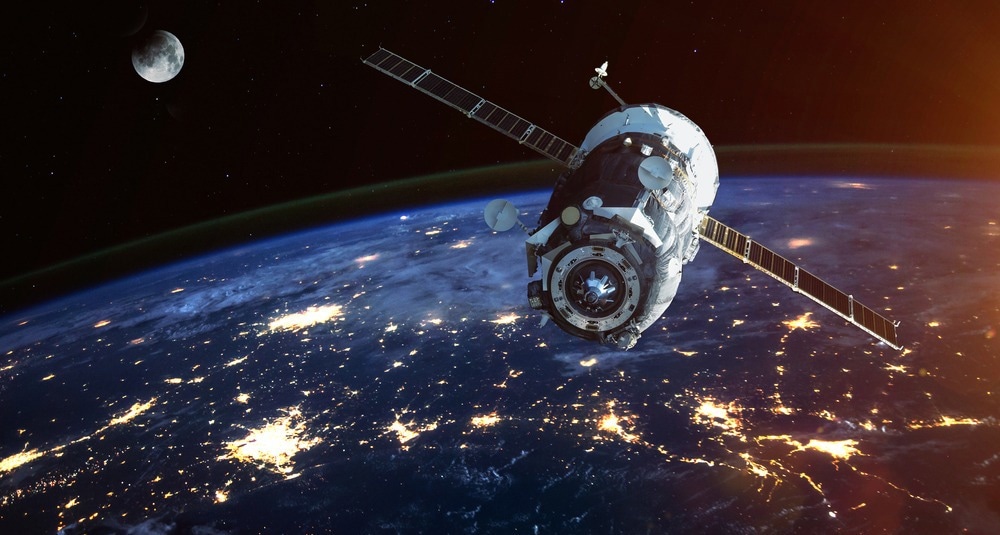A Beijing Satellite Navigation Center research group, led by Professor Yijun Tian, has developed a new concept for computing time delay parameters of radio determination service system (RDSS) equipment. This technique is based on satellite laser ranging (SLR) data and a new precise orbit determination (POD) approach for geostationary Earth orbit GEO satellites based on RDSS data. Their results, which show superior accuracy to previous methods, are published on Remote Sensing.

Study: New Orbit Determination Method for GEO Satellites Based on BeiDou Short-Message Communication Ranging. Image Credit: Vadim Sadovski/Shutterstock.com
China independently developed and runs the BeiDou Navigation Satellite System (BDS), focusing on the nation's national security and economic and social growth requirements. The BDS offers global users all-weather, high-accuracy positioning, navigation, and timing services. The primary data sources used for exact orbit determination are the L-band pseudo-range and phase data. Under uncontrollable circumstances, the data sources used could become unreliable due to technical malfunctions.
BeiDou Navigation Satellite System (BDS)
The BDS development's purpose was to create a navigation satellite system to meet China’s needs for both national security and economic and social development. It also wanted to offer consistent, dependable, and timely service worldwide. Expanded BDS-related industries can support China's economy and improve international cooperation.
The BDS was built with specific objectives. Its space segment comprises a hybrid constellation of satellites in three different orbital types. These are:
- BDS uses more satellites in high orbits than other navigation satellite systems to provide greater anti-shielding capabilities, which is especially noticeable in terms of performance in the low-latitude regions.
- BDS offers multiple-frequency navigation signals, and combining these signals may increase its service's precision.
- BDS combines communication and navigational functions and has a variety of service capabilities, including positioning, navigation and timing, short message communication, international search and rescue, satellite-based augmentation, ground augmentation, and accurate point location.
GEO Satellite Orbit Determination
The radio navigation satellite service (RNSS) system's L-band multi-frequency pseudorange, phase, and ka-band inter-satellite connection data are m used for BeiDou GEO satellite orbit determination.
The accuracy of the position is evaluated using the Overlap Orbit Differences (OOD) method. To assess the orbit accuracy in radial direction, internationally measured SLR data is used.
The accuracy of GEO satellite orbit calculation can be significantly reduced or may fail in the case of atypical RNSS and inter-satellite link data due to unforeseen reasons. Inter-satellite link equipment or satellite navigation unit failure are examples of technical failure that could emerge. This compromises the performance and availability of the positioning and timing service and the BDS.
If such anomalies arise during orbit manipulation or recovery, the kinematic orbit determination approach is used for GEO satellites. Only L-band data are available at this time, and if those data are abnormal, the orbit error grows significantly and negatively impacts the performance of the RDSS service.
In their newly published work, Prof. Yijun Tian and colleagues propose a new precise orbit determination (POD) method for GEO satellites. The method calibrates the RDSS equipment time delay using high-precision SLR data as the baseline. Their approach incorporates BDS short-message communication ranging data.
Development of New Method
In the RDSS system, BDS uses an active positioning mode with 4-way ranging observations. As described in detail in the journal report, the measurement model of RDSS uses a combination of L- and C- band uplinks and downlinks between the out-station and in-station beams.
The time delay of the RDSS equipment is first estimated based on SLR data for the new POD method for GEO satellites using only the RDSS data. Subsequently, the corrected RDSS time delay value is fixed in the POD process. RDSS data is necessary for calculating the satellite orbit and dynamic parameters.
The SLR and RDSS data are preprocessed using a suitable dynamical model. Then the SLR and RDSS data are combined to determine the orbit to calibrate the RDSS equipment time delay.
Verifying the New Method
The RDSS data chosen for the experiment cover the period of 1–3 July 2019 and 1–31 July 2021. The SLR statistics were from June 1, 2019, to July 31, 2021. The RDSS data from 1 to 10 July 2019 and 29 May to 31 July are utilized for sliding orbit determination with a 3-day arc length and orbit determination. This data is combined for the time delay calibration of the RDSS equipment. Analysis was conducted on the precision of the calculated RDSS time delay value, orbit precision of GEO satellites based on observation residuals, overlap orbit discrepancies, and orbit precision in radial direction based on SLR data.
Results and Outlook
According to the results, the short-arc orbit accuracy after four hours of maneuvering is 11.11 m, and the orbit accuracy in the orbital arc and the 2-hour orbital prediction arc for GEOs are 6.01 m and 6.99 m, respectively.
Using SLR data, the orbit accuracy in the radial component is 0.54 m.
The BDS-3's RDSS service requires GEO satellites to have an orbital accuracy of 15 m. This outcome exhibits superior accuracy when compared with past measurements. The approach also improves measurement techniques for determining orbits for GEO satellites, giving BeiDou GEO satellites a backup orbit determination technology during orbit maneuvers or recovery periods.
References
Li, Xiaojie, Rui Guo, Jianbing Chen, Shuai Liu, Zhiqiao Chang, Jie Xin, Jinglei Guo, and Yijun Tian. (2022) New Orbit Determination Method for GEO Satellites Based on BeiDou Short-Message Communication Ranging. Remote Sensing 14, no. 18: 4602. http://www.mdpi.com/2072-4292/14/18/4602/htm
Disclaimer: The views expressed here are those of the author expressed in their private capacity and do not necessarily represent the views of AZoM.com Limited T/A AZoNetwork the owner and operator of this website. This disclaimer forms part of the Terms and conditions of use of this website.